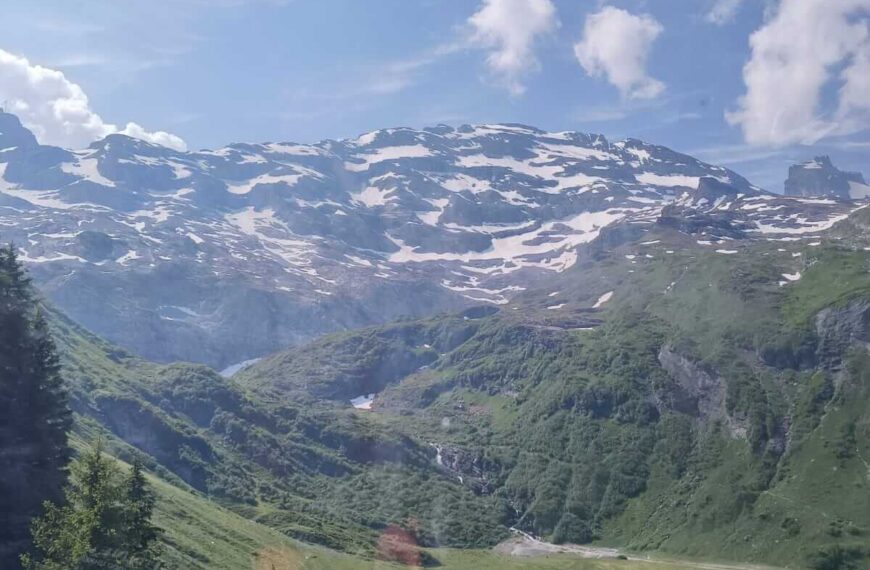Prof Aparajita unfolds a sage of a cheetah mid-leap, claws extended, silhouetted against the golden plains of the Masai Mara. In the distance, a lone Thomson’s Gazelle streaks like a blur, dust billowing in its wake.

It was a warm afternoon in late August. We had been there in Masai Mara for three days now. Lions were observed in large numbers—sleeping ones, wakeful ones, predatory ones, and lazy ones after a heavy meal. We had seen some leopards. We had seen several cheetahs too—there was once a pair feeding on a Topi they had killed, a few of them, we had spotted loping around in search for prey, there was one sitting bolt upright on top of a little knoll, probably scanning the landscape in search for prey.
But we had never seen a cheetah make a kill. Many of the members of our Safari group keep ruing about that time and again, voicing how they would love to see a cheetah make a kill right in front of them so that they could film the entire encounter. But I for one, did not like this rather homocentric approach to photography, where you would wish death on a creature, just for the fun of filming it for showing off as a trophy of sensational photography later.
… we were cruising around… keeping an eye out for any episode in the ever-interesting drama about wildlife…
On the last day of our stay there, we were cruising around in our Safari Land Rover, keeping an eye out for any episode in the ever-interesting drama about wildlife that might be playing out there in the expanses of the Mara. At one point, we came across almost ten Safari vehicles parked seemingly in the middle of nowhere. The drivers of all the vehicles were in communication with each other over the walkie-talkie, our driver Dennis told us that a cheetah had been spotted in the thick underbrush that could be seen some 100 feet away. We naturally scoured the bushes, sharp on the lookout for the cheetah in question.
My naked eyes not making much headway, I zoomed in on the undergrowth with my camera lens and began to comb it systematically right from the left to the right, moving my heavy camera slowly from left to right, my eye glued to the viewfinder. Suddenly, I spotted it—a full-grown cheetah crouched tensely, its ochre coat almost one with the dusty soil of the same colour, on the verge of breaking into a sprint. I took my eyes off the viewfinder for a split fraction of a second to see what it was that the predator had its eyes on. There was a young Thomson’s Gazelle strutting rather aimlessly around, all alone and separated somehow from its herd. I snapped back to my viewfinder and started adjusting the lens, understanding that a chase was about to happen.
And then, just like that, my camera battery gave out.

And then, just like that, my camera battery gave out. Unceremoniously. Frustratingly. Maddeningly. Kicking myself for not having had the sense to keep checking the battery status on my monitor, I decided in desperation to just use my eyes to witness, and remember, a scene that must play out every single day in the secluded expanses of the Mara.
As the cheetah sprang into a chase, the startled and alarmed gazelle, acting on instinct, took flight too and began running for its life, its nostrils flared for that extra bit of air to power its lungs. And behind it, steadily closing in, pounded the intent cheetah, its eyes riveted on its prey.
A cloud of dust rose as the thudding footfalls of the cheetah which was ventre e terre on the tail of the gazelle, seemed to pound right inside our hearts. And then, just when it seemed that the cheetah had the poor little gazelle within a paw’s length, the little creature gave a renewed burst of frantic energy and sped away as the rather surprised cheetah, knowing when it was beaten, slowed down, still staring at the fast receding figure of the leaping gazelle.
As the crestfallen cheetah slowly made its way back to the shade of acacia to get its breath, I breathed a sigh of relief that I did not have to witness what I know is the mundane, workaday, tooth-and-claw way in which nature works, every single day.
…Megha, my daughter, had taken an excellent shot at the chase.
To my delight, I later found that Megha, my daughter, had taken an excellent shot at the chase. So, the picture I am sharing here today is not taken by me, but by Megha.
Photos by Megha Hazra





 By
By

 By
By
Thrilling – well done, professor!